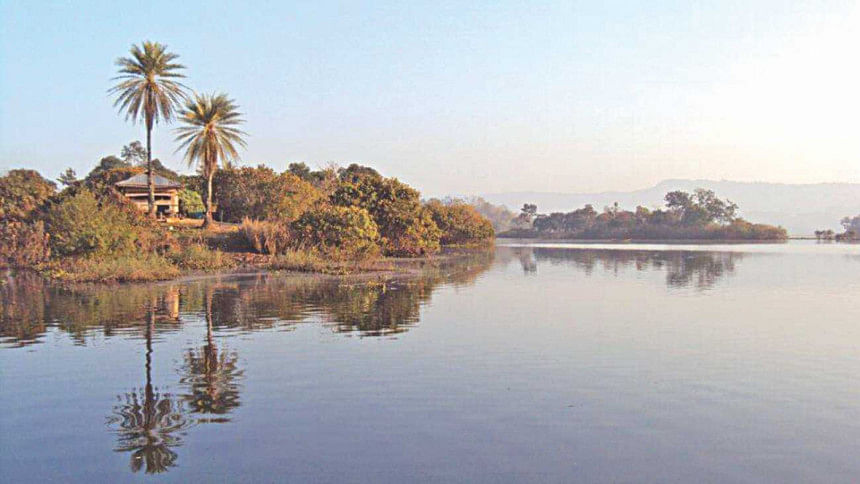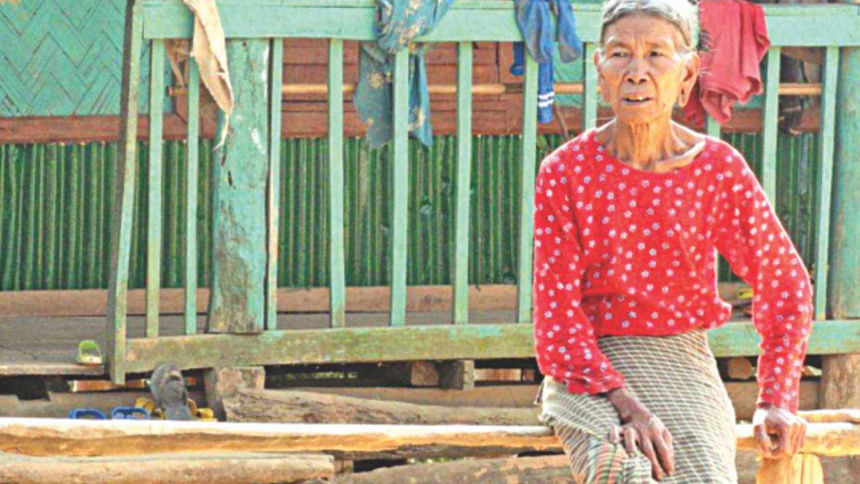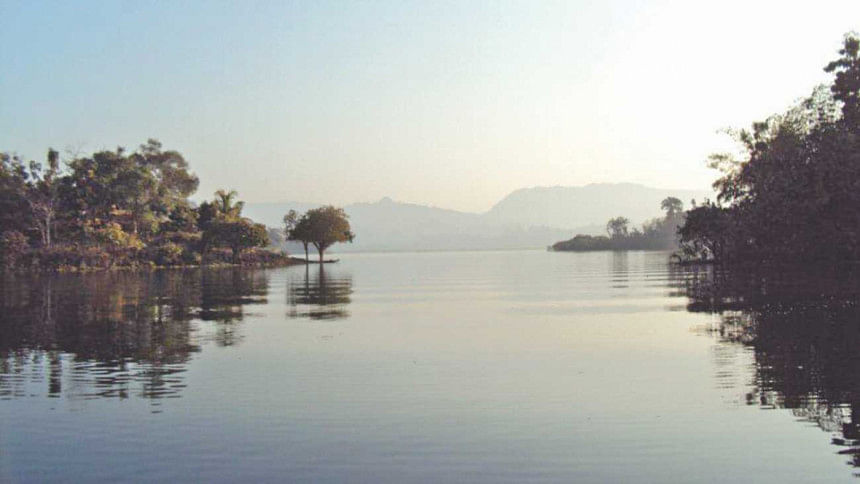By the tranquil waters

It was mentioned quite a few times—a mountain surrounded by deep forests where wild flowers bloom in abundance during monsoon. We did not wait for the rains though, and in the midst of the chilly winter, we set out to see this place of untold wonders.
As we moved further into the wild on a boat from the pier in Rangamati, the scenes kept changing. Signs of civilisation, buildings and people, kept becoming rarer to sight. The forest became deeper, the boughs of large trees on the banks almost came down and touched the water from both sides.
For a while we thought it would not be navigable and the boat will not fit, but it glided smoothly through.
We continued on the boat for about three hours, making our way to a village of the Pankhoa people near Bilaichhori. The scene around us was too beautiful to do justice with words, you need to see it to believe.
In some places the water was so clean, that it reflected everything around the river clearly. And the sky? Brilliantly blue. I could not help but hum… "Emon Desh-ti Kothao Khuje Pabe Nako Tumi, Shokol Desh-er Rani Shey Je, Amar Jonmobhumi."
Special permits are required to go some of the way in the deeper areas, which are usually collected by the boatmen or local guides. About two hours after we had started, we spotted some signs of habitation—small houses, a boat tied on the pier, someone carrying water, and others bathing in the clear stream.
A few times some passenger boats went past us as well. Members of various indigenous tribes live here. Some Bengalis have also settled far into the wilderness, but the most striking feature here is the silence. That tranquillity can have a voice, can be realised here. Even the sound from the boat's engine could not disturb this silence.
As the village is pretty deep into the wilderness, and the way can take about three or more hours, it is better to come prepared with some food and water.

The hills on which the Pangkho have built their villages are next to the Riangkhong River. The school community building for the Pankhoa children comes into view from quite a distance. Visitors can stay there if they make contact prior to arrival. A lot of tourists just come for a little while, enjoy nature and return to Rangamati without staying the night.
Speedboats also operate on this route. Even just the scenery on the river banks is worth many hours' ride over the river.
The Pankhoa are few in number, and live in hard to access places. A large number of them live in India's Mizoram State. They are mostly Christian, but live according to their own social norms. Although not well off, they are very cordial.
Their homes are nice, neat and clean, and almost everyone owns a few hens and ducks. The women carry cute babies on their backs, while going on about their daily chores and work.

If you want to stay there a while, contact the Green Hill organisation, a private initiative, for boarding and meal arrangements. The small tea stalls will be able to cater your snacking needs to some extent, and with some effort, proper hill cuisine can also be had.
Even though the village is by the river, it is a bit up the hilly slopes, and water is not easy to access. Also, you probably will not have any telephone network access except for right at the hill top. So any cellphone and Internet addicts should think twice.
The crystal clear Riangkhong flows right past where we stayed. Who would have thought that even such a deep dark night can be so beautiful—a canopy of shimmering stars over a still black night, open land, the sound of a mountain river gently gliding by, the shadowy presence of the nearby hills, and the smell of winter in the wind, with the intermittent calls of nocturnal creatures somewhere far away.

The locals said wild hogs, deer and many birds live in the nearby jungles. The river also has very tasty fish. And it would be an injustice to deprive yourself of a dip in the tempting cool water after the sun is up.
The next morning we again set off on the boat, to finally see the barren boulders that have amazed many. Oh, the beauty! So much greener and so full of wild flowers. The water was so clear that even the plants growing on the riverbed were clearly visible. And the rocky mountain stood by in quite magnificence. The more adventurous can even get off the boat to explore.
We started back for Rangamati, through early morning fog, after spending two wonderful nights in the village. A few small boats were already on the river. We saw the sun rise through the fog on the way, and we experienced the unique beauty of the sun rising over a hilly river. This serene river has a lot stronger current in the rainy season, so autumn and winter are ideal for visiting.
If intimacy with nature in its full regalia of green and tranquillity appeals to you, this place will not disappoint.
By Shahana Huda
Translated by Sania Aiman
Photo courtesy: Shahana Huda

 For all latest news, follow The Daily Star's Google News channel.
For all latest news, follow The Daily Star's Google News channel. 



Comments